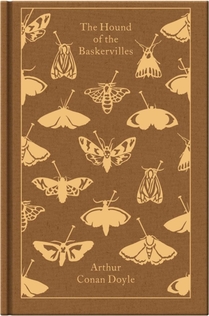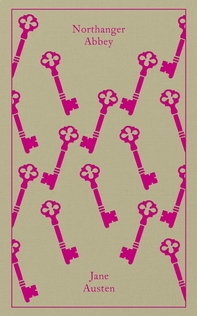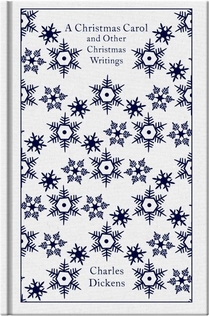
15 Kate Middleton Books - Classic Reads
Kate Middleton
Recently the Duchess of Cambridge revealed her workplace with neatly organized pile of books. Here are some books from Kate Middleton's library. You cannot but see the royal aesthetics of her reading taste. Enjoy Kate Middleton 15 favorite books!
See all
0
likes

Bleak House
The law courts prevailing over the case of Jarndyce & Jarndyce are overwhelming in their pedantic, futile red-tape bureaucratic adherence to old principles and are partly based on Dickens' time as a young law clerk. With a massive cast of characters--many with ingeniously comic names--and his most complex plot, Bleak House is believed by many to be Dickens' greatest work.This is a free digital copy of a book that has been carefully scanned by Google as part of a project to make the world's books discoverable online. To make this print edition available as an ebook, we have extracted the text using Optical Character Recognition (OCR) technology and submitted it to a review process to ensure its accuracy and legibility across different screen sizes and devices. Google is proud to partner with libraries to make this book available to readers everywhere.
See all

The Odyssey
'Tell me, Muse, of the man of many turns, who was driven far and wide after he had sacked the sacred city of Troy' Twenty years after setting out to fight in the Trojan War, Odysseus is yet to return home to Ithaca. His household is in disarray: a horde of over 100 disorderly and arrogant suitors are vying to claim Odysseus' wife Penelope, and his young son Telemachus is powerless to stop them. Meanwhile, Odysseus is driven beyond the limits of the known world, encountering countless divine and earthly challenges. But Odysseus is 'of many wiles' and his cunning and bravery eventually lead him home, to reclaim both his family and his kingdom. The Odyssey rivals the Iliad as the greatest poem of Western culture and is perhaps the most influential text of classical literature. This elegant and compelling new translation is accompanied by a full introduction and notes that guide the reader in understanding the poem and the many different contexts in which it was performed and read.
See all

Wuthering Heights
Published in 1845, Emily Bronte’s gothic novel set on the windy moors of Yorkshire is the story of the doomed love between Catherine Earnshaw and her father’s adopted son, Heathcliff. The book was initially poorly received by many critics who found its dark, tragic story needlessly harsh and disturbing. That opinion has not endured, and the only novel Emily Bronte published is now considered to be one of the great classics of English literature.
See all

The Hound of the Baskervilles
The Hound of the Baskervilles: This novel is one of the better-known Sherlock Holmes stories: a monstrous hound haunts the moor around Baskerville Hall. Doyle is quite effective at evoking the bleakness of the moor. The dark aura of the setting is magnifi
See all

The Picture of Dorian Gray
A beautiful young man, Dorian Gray, sits for a portrait. In the garden of the artist's house he falls into conversation with Lord Wotton, who convinces him that only beauty is worth pursuing. Gray wishes that his portrait, and not himself, might age and show the effects of time. His wish comes true, and wild, hedonistic pursuits horribly disfigure the portrait. This Faustian story caused much controversy when it was first published, as it discusses decadent art and culture, and homosexuality. It is now considered one of the great pieces of modern Western literature.
See all

Middlemarch
This title includes introduction and notes by Doreen Roberts, Rutherford College, University of Kent at Canterbury. 'Middlemarch' is a complex tale of idealism, disillusion, profligacy, loyalty and frustrated love. This penetrating analysis of the life of an English provincial town during the time of social unrest prior to the Reform Bill of 1832 is told through the lives of Dorothea Brooke and Dr Tertius Lydgate and includes a host of other paradigm characters who illuminate the condition of English life in the mid-nineteenth century. AUTHOR: Mary Anne Evans (1819-1880), better known by her pen name George Eliot, was an English novelist. She was one of the leading writers of the Victorian era. Her novels, largely set in provincial England, are well known for their realism and psychological insight. She used a male pen name, she said, to ensure that her works were taken seriously. Female authors were published under their own names, but Eliot wanted to ensure that she was not seen as merely a writer of romances. An additional factor may have been a desire to shield her private life from public scrutiny and to prevent scandals attending her relationship with the married George Henry Lewes
See all

Tess of the d'Urbervilles
IOn an evening in the latter part of May a middle-aged man was walking homeward from Shaston to the village of Marlott, in the adjoining Vale of Blakemore, or Blackmoor. The pair of legs that carried him were rickety, and there was a bias in his gait which inclined him somewhat to the left of a straight line. He occasionally gave a smart nod, as if in confirmation of some opinion, though he was not thinking of anything in particular. An empty egg-basket was slung upon his arm, the nap of his hat was ruffled, a patch being quite worn away at its brim where his thumb came in taking it off. Presently he was met by an elderly parson astride on a gray mare, who, as he rode, hummed a wandering tune."Good night t'ee," said the man with the basket."Good night, Sir John," said the parson.The pedestrian, after another pace or two, halted, and turned round."Now, sir, begging your pardon; we met last market-day on this road about this time, and I said 'Good night,' and you made reply 'Good night, Sir John,' as now.""I did," said the parson."And once before that—near a month ago.""I may have.""Then what might your meaning be in calling me 'Sir John' these different times, when I be plain Jack Durbeyfield, the haggler?"The parson rode a step or two nearer."It was only my whim," he said; and, after a moment's hesitation: "It was on account of a discovery I made some little time ago, whilst I was hunting up pedigrees for the new county history. I am Parson Tringham, the antiquary, of Stagfoot Lane. Don't you really know, Durbeyfield, that you are the lineal representative of the ancient and knightly family of the d'Urbervilles, who derive their descent from Sir Pagan d'Urberville, that renowned knight who came from Normandy with William the Conqueror, as appears by Battle Abbey Roll?"
See all

Mansfield Park
Begun in 1811 at the height of Jane Austen's writing powers and published in 1814, Mansfield Park marks a conscious break from the tone of her first three novels, Northanger Abbey, Sense and Sensibility, and Pride and Prejudice, the last of which Austen came to see as 'rather too light.' Fanny Price is unlike any of Austen's previous heroines, a girl from a poor family brought up in a splendid country house and possessed of a vast reserve of moral fortitude and imperturbability. She is very different from Elizabeth Bennet, but is the product of the same inspired imagination. Mansfield Park shows Austen as a mature novelist with an almost unparalleled ability to render character and an acute awareness of her world and how it was changing. Through the stories of Fanny Price, the Bertrams, and the Crawfords, she tackles the themes of faith and constancy and the threat that metropolitan manners could pose to a rural way of life. Mansfield Park is as amusing as any of Austen's novels, but, according to the critic Tony Tanner, it is also arguable that it is 'her most profound novel (indeed... it is one of the most profound novels of the nineteenth century).'
See all

Northanger Abbey
Although Northanger Abbey was not published until after Jane Austen's death in 1817, it was one of her first novels. Northanger Abbey is, in part, Austen's response to Gothic novels, like Ann Radcliffe's The Mysteries of Udolpho, which were enjoying tremendous popularity in the late seventeeth and early eighteenth centuries, and to their devoted readers. It is a fine demonstration of the young novelist's powers of social observation and pristine style, which are the hallmarks of her work. In opposition to the Gothic novelists' portentous prose and unlikely heroines, she presents a charmingly believable Catherine Morland. In one of Austen's delightful satirical twists, Catherine, recently introduced into society, is a voracious reader of Gothic stories. When she is invited to stay with the Tilneys in their seemingly foreboding abbey, she fears that it is the kind of terrible place described in the novels she devours.
See all

Sense and Sensibility
Jane Austen’s first published novel, Sense and Sensibility, is a witty satire of the sentimental novel, a popular genre in Britain throughout the 1790s and the Regency. When it first appeared in 1811, the words in its title carried significant cultural weight beyond the confines of the novel, and into both popular and learned discourse. Through her dual heroines, Austen addresses, and satirizes, notions of sense and sensibility, and engages with the issues of inheritance, marriage, and love. The story concerns two sisters: the level-headed Elinor and the passionate and impulsive Marianne. When their father dies, his son by a previous marriage assumes possession of the family home. Marianne and Elinor, left to the care of their mercenary brother John and his wife Fanny, must remove to a cottage with their mother. Each sister meets a man in whom she is interested, and as with other Austen novels, requited love does not come easily. This newly annotated edition offers a thorough and perceptive introduction and a wide range of carefully selected contextual materials that further explore the term “sensibility.”
See all

The Sonnets and a Lover's Complaint
When this volume of Shakespeare's poems first appeared in 1609, he had already written most of the great plays that made him famous. The 154 sonnets - all but two of which are addressed to a beautiful young man or a treacherous 'dark lady' - contain some of the most exquisite and haunting poetry ever written, and deal with eternal subjects such as love and infidelity, memory and mortality, and the destruction wreaked by Time. Also included is A Lover's Complaint, originally published with the sonnets, in which a young woman is overheard lamenting her betrayal by a heartless seducer.
See all

A Christmas Carol and Other Christmas Writings
'Every idiot who goes about with "Merry Christmas" on his lips, should be boiled with his own pudding'Dickens's story of solitary miser Ebenezer Scrooge, who is taught the true meaning of Christmas by a series of ghostly visitors, has had an enduring influence on the way we think about the season. Dickens's other Christmas writings collected here include 'The Story of the Goblins who Stole a Sexton'; 'The Haunted Man'; and shorter pieces, some drawn from the 'Christmas Stories' that Dickens wrote annually for his weekly journals. In all of them Dickens celebrates Christmas as a time of geniality, charity and remembrance.Edited with an introduction by MICHAEL SLATER
See all

Harry Potter and the Sorcerer's Stone
During the programme, the Duchess of Cornwall revealed that her husband has a talent for narrating stories. "He reads Harry Potter and he can do all the different voices and I think the children really appreciate that," she said at the time.

The Gruffalo
The Gruffalo, is also frequently read in the Cambridge household, and during William's meeting with her, he said: "I know who you are. It's a big hit in our household."

Room on the Broom
The Cambriges are avid readers. Most recently, Prince William revealed that his children were fans of Julia Donaldson's Room On The Broom. The book tells the story of a friendly witch who invites animals to join her on her broom, and help the witch when she is threatened on their journey by a dragon.
See all







